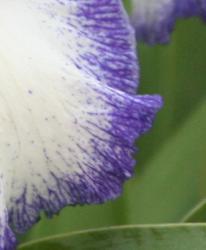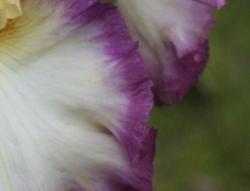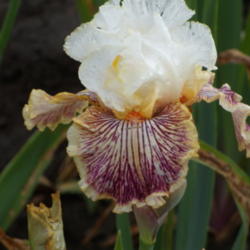In Plicatas, the band of color may be deeply saturated, especially on the outer edge, but the inner edge usually shows speckles of pigment:

In some cases, the speckling can go all the way to the center of the petal:
Emma Cooks may also have deeply saturated bands of color, but the inside edge is "cleaner". The pigment may follow the veins towards the inner part of the petal, but you don't see those speckles

Muddymitts said:
In the plicata example that you showed (can't remember the name) -- it had rim colors well-defined and a saturated color, and on both standards and falls. Would that qualify as a definition of a plicata Iris?
No, there are plicatas that don't have bands of color on the standards:
Muddymitts said:
In both Designer Art and Clothed in Glory -- the colored edge is not a distinct band -- it's more of an *aura* of color. And it's a soft version of the color. And I believe this is true of Queen's Circle too -- gotta go look at it again. And the standards have no rim color at all. This is true for these three -- is it true for all Emma Cooks?
Yes, Emma Cooks lack bands on the standards. However, there ARE non-Plicatas that have bands of color on both the standards and falls:
I don't think there is a special name for this pattern, the iris people I know just refer to them as Bicolors (a pattern that covers a wide range of things).




